FEATURES
Translation Memory
Streamline your translation projects and increase your teams productivity with Translation Memory.
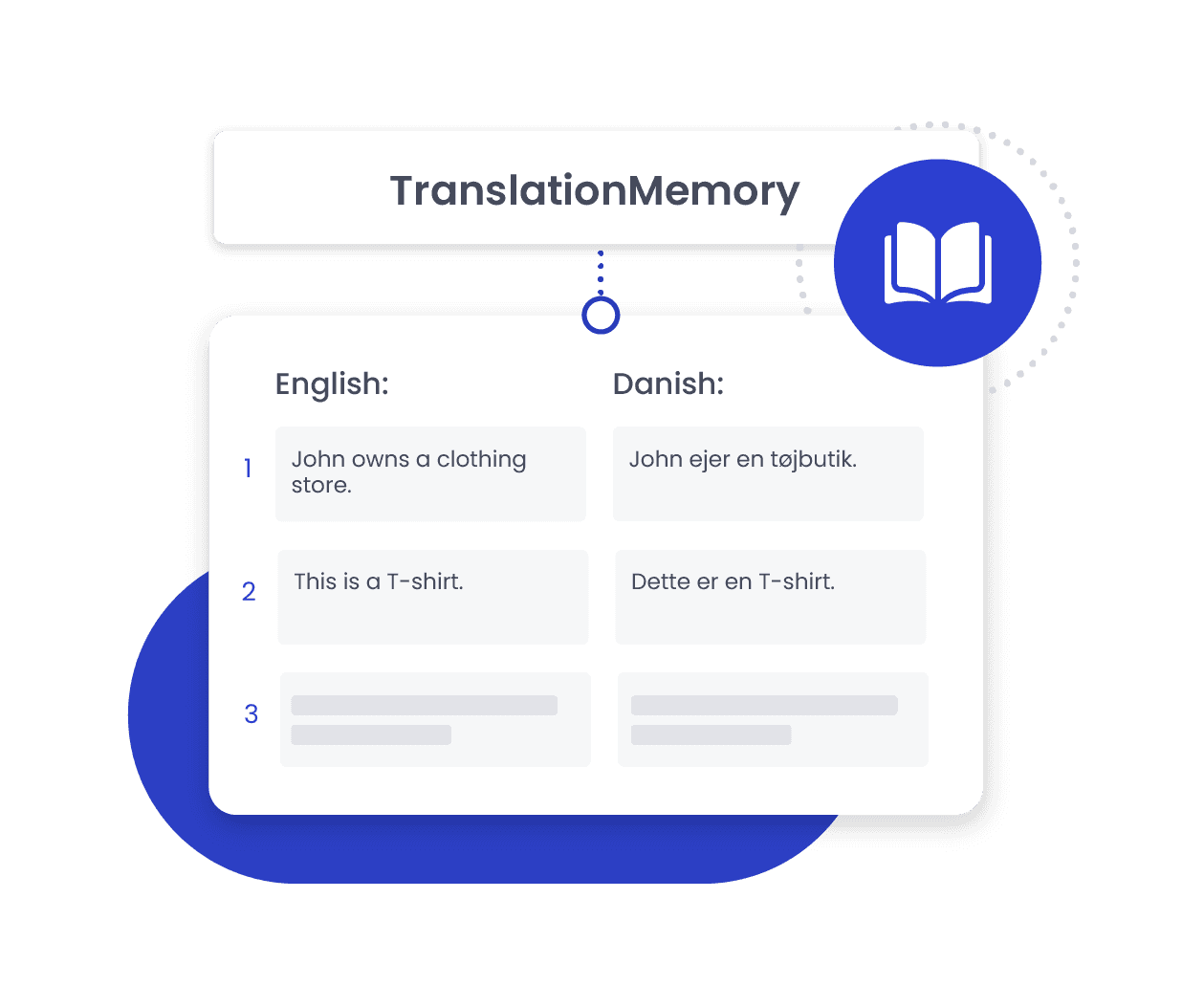
FEATURES
Translation Memory
Streamline your translation projects and increase your teams productivity with Translation Memory.

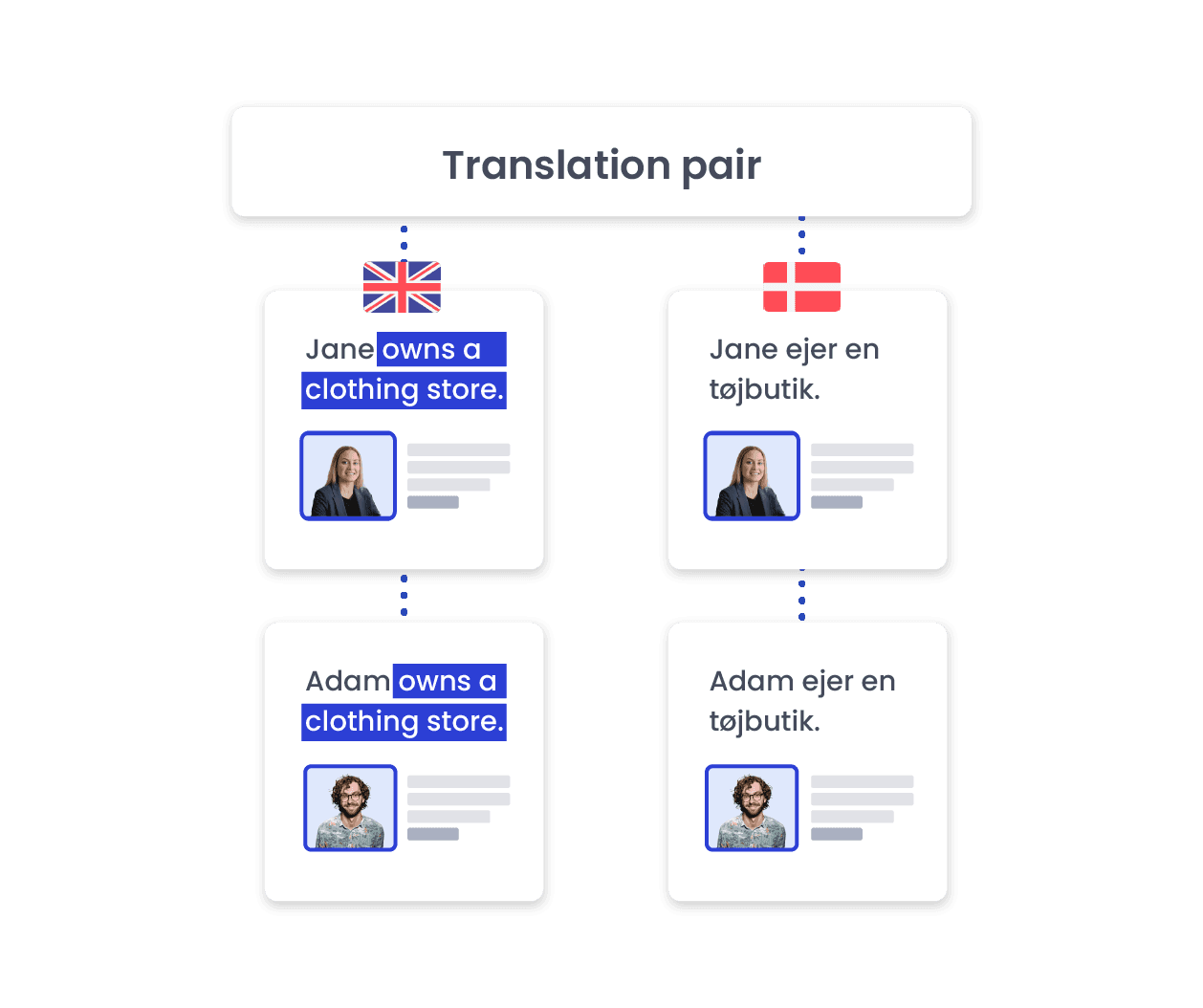
INCREASE TRANSLATION SPEED
Translation Memory repurposes previously translated segments that are identical to the current translation with differences only in things such as numbers or punctuation.
REDUCE TRANSLATION COSTS
ENSURE CONSISTENCY
MAINTAIN YOUR BRAND VOICE

INCREASE TRANSLATION SPEED
Translation Memory repurposes previously translated segments that are identical to the current translation with differences only in things such as numbers or punctuation.
REDUCE TRANSLATION COSTS
ENSURE CONSISTENCY
MAINTAIN YOUR BRAND VOICE

INCREASE TRANSLATION SPEED
Translation Memory repurposes previously translated segments that are identical to the current translation with differences only in things such as numbers or punctuation.
REDUCE TRANSLATION COSTS
ENSURE CONSISTENCY
MAINTAIN YOUR BRAND VOICE
Time and cost optimisation
Save time and money by streamlining repetitive tasks and optimising the translation process.
Enhanced translation quality
Elevate the quality of your translations by using Translation Memory to proactively prevent inconsistencies.
Efficiency boost
Increase team productivity by up to 60% with Translation memory and streamline your translation process.
Time and cost optimisation
Save time and money by streamlining repetitive tasks and optimising the translation process.
Enhanced translation quality
Elevate the quality of your translations by using Translation Memory to proactively prevent inconsistencies.
Efficiency boost
Increase team productivity by up to 60% with Translation memory and streamline your translation process.
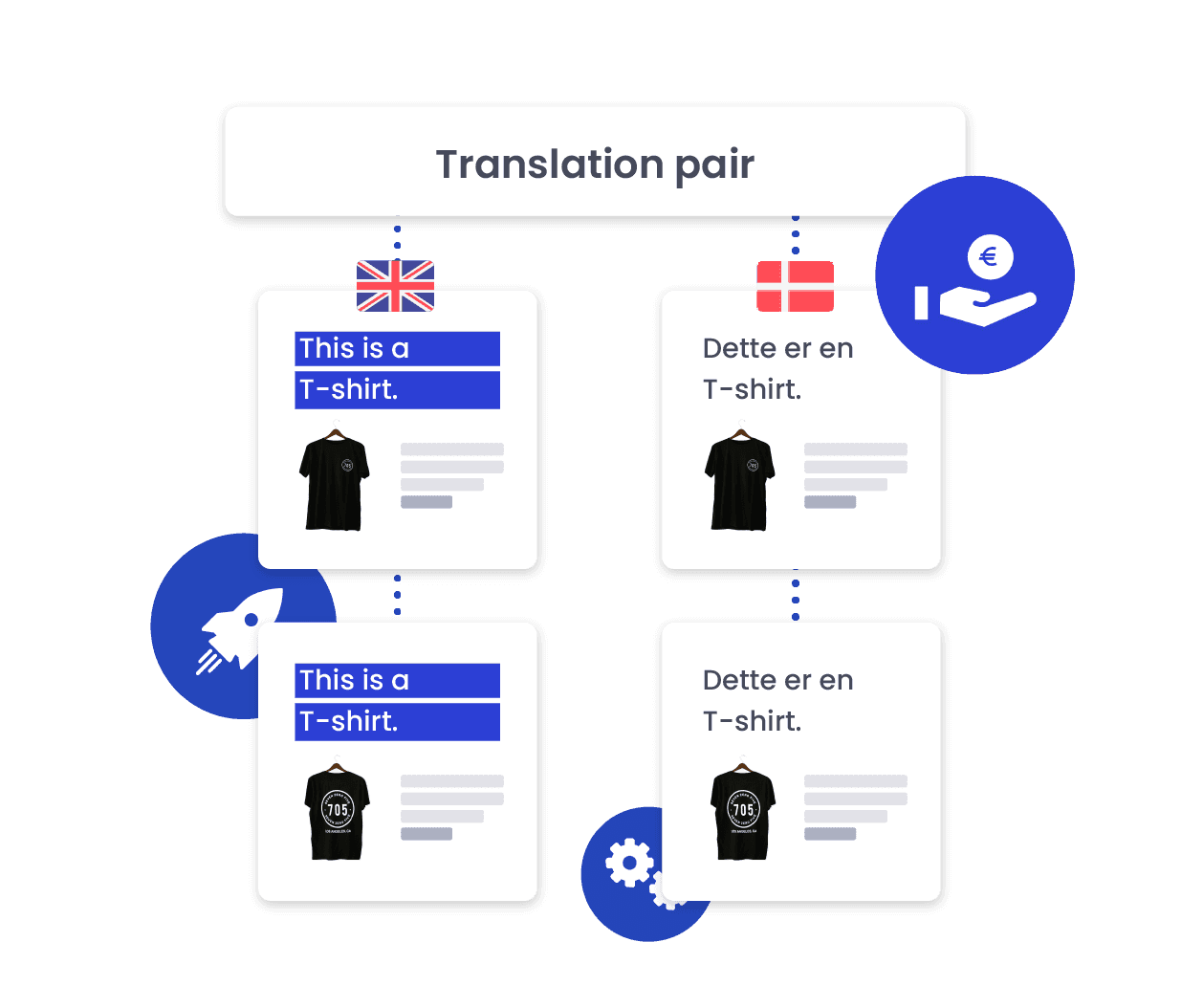
Optimise costs and boost revenue with Translation Memory
Translation Memory not only saves time but also minimizes costs, making it especially effective for repetitive texts or technical content like product descriptions and contracts. By referencing previous translations, it accelerates the translation process, reducing expenses and enabling increased project throughput, ultimately enhancing overall revenue.
Reach your translation goals faster
Experience faster project completion times and enhance team efficiency with the Translation Memory feature in our CAT tool. By suggesting identical, previously translated segments, it eliminates the need for translators to start from scratch, optimising their speed by up to 86%. The tool's real-time accessibility ensures multiple users can contribute seamlessly, reducing redundant work and driving overall project success.
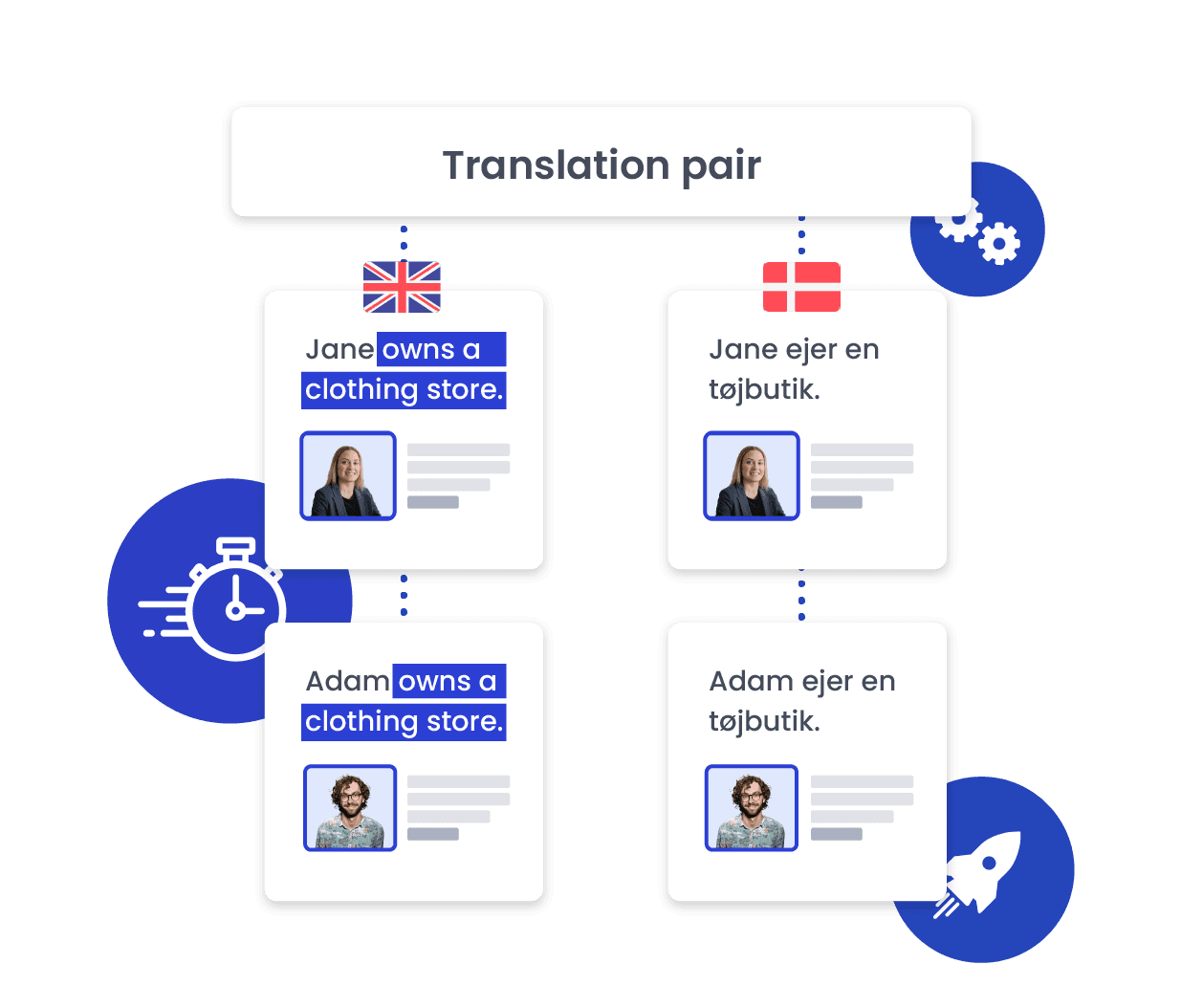

Optimise costs and boost revenue with Translation Memory
Translation Memory not only saves time but also minimizes costs, making it especially effective for repetitive texts or technical content like product descriptions and contracts. By referencing previous translations, it accelerates the translation process, reducing expenses and enabling increased project throughput, ultimately enhancing overall revenue.
Reach your translation goals faster
Experience faster project completion times and enhance team efficiency with the Translation Memory feature in our CAT tool. By suggesting identical, previously translated segments, it eliminates the need for translators to start from scratch, optimising their speed by up to 86%. The tool's real-time accessibility ensures multiple users can contribute seamlessly, reducing redundant work and driving overall project success.

Features
Explore how our other features help you achieve your translations goals.

Automation Workflows
Eliminate repetitive translation tasks and streamlines your workflows.

String Library
Manage your translations by centralising your keys for easier reusability.

Team of freelancers
Set up your team of translators & editors to ensure accurate and consistent content

Editor tool
Revise translations seamlessly and eliminate the need to switch between apps.
Features
Explore how our other features help you achieve your translations goals.

Automation Workflows
Eliminate repetitive translation tasks and streamlines your workflows.

String Library
Manage your translations by centralising your keys for easier reusability.

Team of freelancers
Set up your team of translators & editors to ensure accurate and consistent content

Editor tool
Revise translations seamlessly and eliminate the need to switch between apps.
Features
Explore how our other features help you achieve your translations goals.

Automation Workflows
Eliminate repetitive translation tasks and streamlines your workflows.

String Library
Manage your translations by centralising your keys for easier reusability.

Team of freelancers
Set up your team of translators & editors to ensure accurate and consistent content

Editor tool
Revise translations seamlessly and eliminate the need to switch between apps.
Users love us


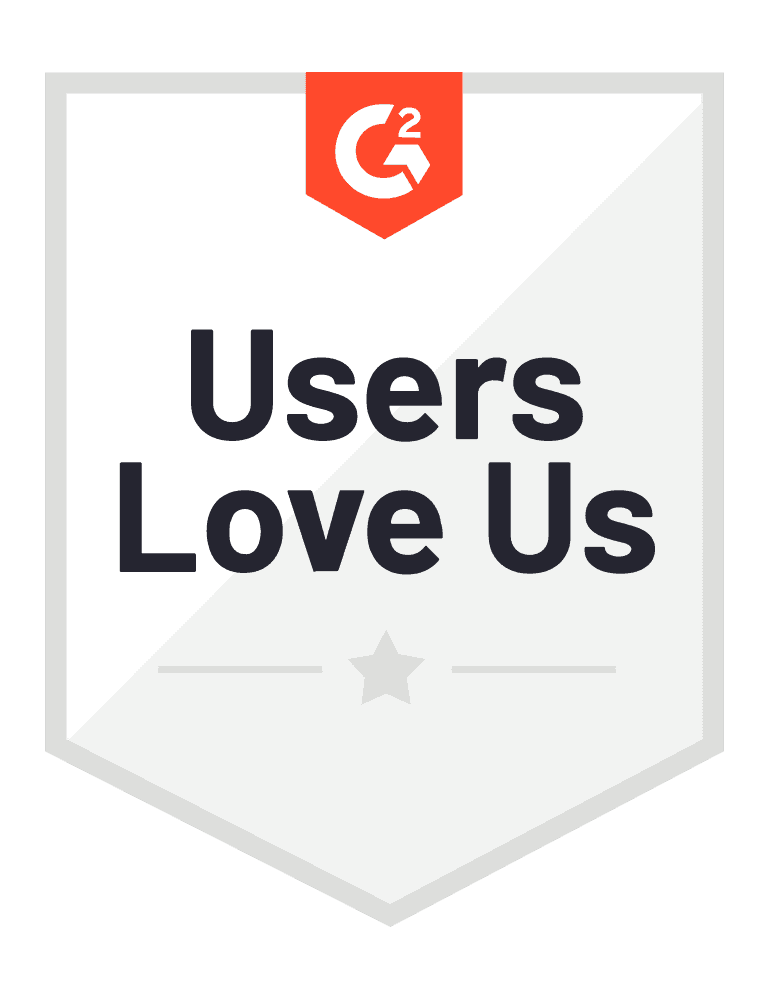


Excellent service and great translation
The software is easy to use and the service team supports you all the way if needed.
Customer comes first
Rarely does one have the pleasure of working with a company with such clear values towards customer satisfaction.
Users love us





Excellent service and great translation
The software is easy to use and the service team supports you all the way if needed.
Customer comes first
Rarely does one have the pleasure of working with a company with such clear values towards customer satisfaction.
Users love us





Excellent service and great translation
The software is easy to use and the service team supports you all the way if needed.
Customer comes first
Rarely does one have the pleasure of working with a company with such clear values towards customer satisfaction.
Better than human translations
Step into the future of translation services with HumanAI - where AI and human collaboration set a new standard for on-brand global communication
Better than human translations
Step into the future of translation services with HumanAI - where AI and human collaboration set a new standard for on-brand global communication
LangOps Platform
Services
Titangade 9-11, 2200 Copenhagen N, Denmark
Tel: +45 70 20 55 50 | hello@easytranslate.com
Copyright Ⓒ 2025 EasyTranslate A/S. All rights reserved.
VAT: DK33240562
LangOps Platform
Services
Titangade 9-11, 2200 Copenhagen N, Denmark
Tel: +45 70 20 55 50 | hello@easytranslate.com
Copyright Ⓒ 2025 EasyTranslate A/S. All rights reserved.
VAT: DK33240562
LangOps Platform
Services
Titangade 9-11, 2200 Copenhagen N, Denmark
Tel: +45 70 20 55 50 | hello@easytranslate.com
Copyright Ⓒ 2025 EasyTranslate A/S. All rights reserved.
VAT: DK33240562





